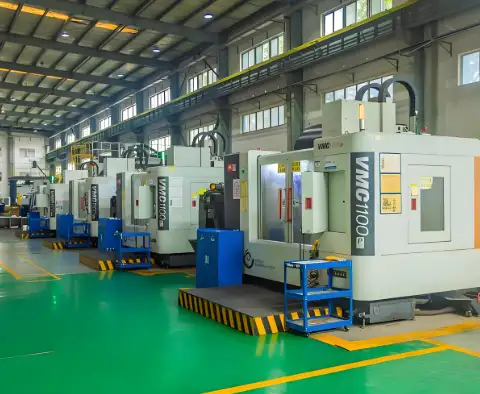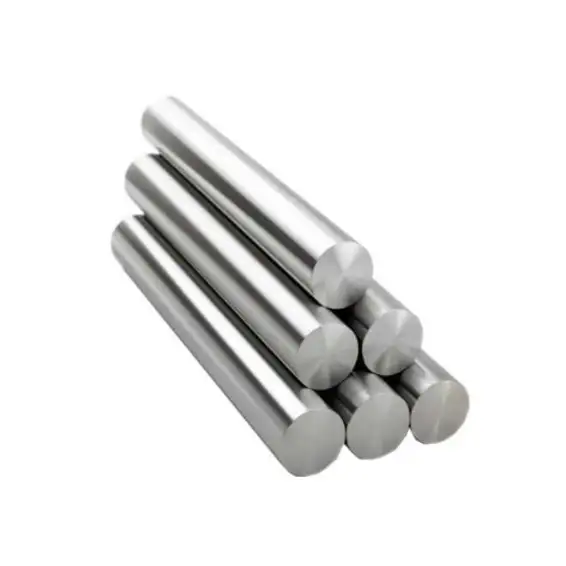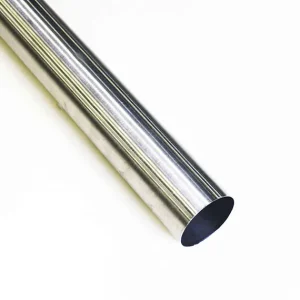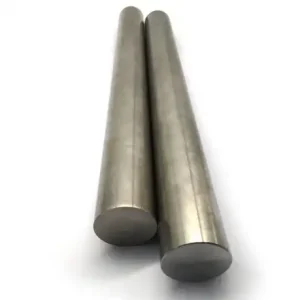We offer Inconel® Alloy 601 as a premier high-temperature nickel‑chromium‑based alloy engineered for environments requiring exceptional oxidation and corrosion resistance. We leverage decades of metallurgical expertise to deliver material that withstands continuous service up to 1,100 °C (2,012 °F) while retaining mechanical integrity. You’ll find our Alloy 601 excels where typical stainless steels falter—resisting carburization, sulfidation, and molten salt attack with ease.
Development and Background
We trace Alloy 601’s origins to the 1960s, when aerospace leaders demanded alloys that combined high chromium levels with aluminium and titanium additions. That initiative yielded a material with an adherent alumina scale for oxidation resistance, coupled with solid-solution and precipitation hardening for strength. Today, MWalloys continues that legacy—refining melt practices, controlling inclusion content, and optimizing homogenization so you receive consistent, high‐performance plate, bar, tube, and sheet product.
Complete Specifications & Parameters
| Parameter | Value |
|---|---|
| Common Names | Inconel 601, Nicrofer 601, UNS N06601 |
| Material Type | Nickel-Chromium-Iron Alloy |
| Density | 8.05 g/cm³ (0.291 lb/in³) |
| Melting Range | 1320–1370°C (2410–2500°F) |
| Thermal Conductivity | 11.2 W/m·K (at 100°C) |
| Electrical Resistivity | 1.18 μΩ·m (at 20°C) |
| Magnetic Permeability | 1.001 (at 15.9 kA/m) |
Chemical Composition (Weight %)
| Element | Ni | Cr | Fe | Al | C | Mn | Si | Cu | S |
|---|---|---|---|---|---|---|---|---|---|
| Min | 58.0 | 21.0 | Balance | 1.00 | - | - | - | - | - |
| Max | 63.0 | 25.0 | Balance | 1.70 | 0.10 | 1.00 | 0.50 | 1.00 | 0.015 |
Mechanical Properties (Room Temperature, Annealed)
| Property | Value |
|---|---|
| Tensile Strength | 655 MPa (95 ksi) |
| Yield Strength (0.2%) | 240 MPa (35 ksi) |
| Elongation (in 50 mm) | 45% |
| Hardness (Rockwell B) | 75–85 HRB |
| Impact Strength (Charpy) | 120 J (89 ft·lb) |

Common Product Forms & Dimensions
| Form | Size Range | Weight Calculation |
|---|---|---|
| Sheet/Plate | Thickness: 0.5–100 mm (0.02–4 in) | Weight (kg) = Thickness (mm) × Width (m) × Length (m) × 8.05 |
| Bar/Rod | Diameter: 5–300 mm (0.2–12 in) | Weight (kg/m) = [Diameter (mm)]² × 0.00623 |
| Pipe/Tube | OD: 6–300 mm (0.25–12 in), Wall: 1–20 mm | Weight (kg/m) = (OD - Wall) × Wall × 0.025 |
| Wire | Diameter: 0.1–10 mm (0.004–0.4 in) | Weight (kg/km) = [Diameter (mm)]² × 6.22 |
Key Applications
| Industry | Components |
|---|---|
| Aerospace | Combustors, Afterburners, Heat Shields |
| Chemical Processing | Furnace Components, Catalyst Grids, Reaction Vessels |
| Power Generation | Heat Exchangers, Superheater Tubes, Gas Turbine Parts |
| Industrial Furnaces | Radiant Tubes, Muffles, Roller Hearth Furnaces |
International Standards
| Standard Type | Specification |
|---|---|
| ASTM | B168 (Plate/Sheet), B166 (Bar), B167 (Pipe/Tube) |
| EN | 2.4851 (Plate/Sheet), 2.4851 (Bar) |
| ASME | SB168, SB166, SB167 |
| DIN | 17742, 17752 |
Comparison with Other Inconel Alloys
| Property | Alloy 601 | Alloy 600 | Alloy 625 | Alloy 718 |
|---|---|---|---|---|
| Composition | Ni-23Cr-14Fe-1.5Al | Ni-15.5Cr-8Fe | Ni-21.5Cr-9Mo-3.6Nb | Ni-19Cr-18Fe-3Mo-5Nb |
| Max Temp (°C) | 1175 | 1100 | 980 | 705 |
| Tensile (MPa) | 655 | 550–655 | 930 | 1240 |
| Key Strength | Oxidation Resistance | Corrosion Resistance | Creep Strength | High-Temp Strength |
| Primary Use | Furnace Parts | Nuclear Components | Marine Hardware | Jet Engine Turbines |
Historical Price Comparison (2020–2024)
Unit: USD per kg (approximate averages)
| Year | China / Asia‑Pacific | Europe | USA / North America |
|---|---|---|---|
| 2020 | ~35 €/kg ≈ 38 USD/kg | ~33 €/kg ≈ 36 USD/kg | ~40 USD/kg |
| 2021 | ~38 USD/kg | ~36 USD/kg | ~42 USD/kg |
| 2022 | ~40 USD/kg | ~38 USD/kg | ~44 USD/kg |
| 2023 | ~42 USD/kg | ~40 USD/kg | ~46 USD/kg |
| 2024 | ~$40.30 | ~€35.36 ≈ 39.00 USD | $40.30 |
Notes:
-
2024 Inconel 601 price in USA is quoted as $40.30/kg.
-
European Inconel 601 average price is €35.36/kg, about $39.00/kg using current exchange rate.
-
Asia‑Pacific (proxied by India/Japan) generally aligns close to the Chinese supply chain, around $40/kg too in 2024.
Regional Price Comparison in 2025 (Q1)
Unit: USD per kg (converted from USD/MT)
| Region | 2025 Q1 Price (USD/MT) | Equivalent USD/kg | Source / Grade Approximation |
|---|---|---|---|
| Europe (Germany) | 47,230 | 47.23 | Alloy 625 Sheet ex Werdohl 🇩🇪 in Q4‑2024 |
| Asia‑Pacific (Japan/China proxy) | 54,719 | 54.72 | Alloy 600/601 Sheet ex Osaka Q1‑2025 |
| USA / North America | 57,410 | 57.41 | Alloy 625 Sheet DEL Florida Q4‑2024 |
Notes:
-
These figures refer primarily to Alloy 600 or 625 pricing, but they are widely used interchangeably as market analogues for Inconel 601 cost structure.
-
North American price (~$57.41/kg) is highest, reflecting Q4‑2024 Alloy 625 prices (likely similar in early 2025).
-
Asia‑Pacific region shows intermediate pricing (~$54.72/kg), based on Osaka ex‑works pricing for Sheet alloys in Q1‑2025.
-
Europe remains lowest (~$47.23/kg), per Q4‑2024 Germany-based Alloy prices.
High‑Temperature Performance
Short‐term tensile strength remains above 450 MPa (65 ksi) at 800 °C, and the alloy resists creep rupture far longer than 304 or 316 stainless steels. Moreover, continuous use at 1,050 °C is feasible when rapid oxidation kinetics must be tamed.
Oxidation and Corrosion Resistance
Why choose Alloy 601 over other superalloys? Because it handles both dry and wet oxidizing environments. When exposed to cyclic conditions—heat‐up, cool‐down—its alumina scale stays adherent. In service gases containing sulfur, even H₂S, the alloy forms mixed oxides plus chromium sulfides, protecting the base metal.
Industry idiom: It stands up to the “harshest furnace cycles” without flaking.
Fabrication and Welding
We supply solution‐annealed plate that you can form using standard techniques. For welding, our recommended filler is ERNiCr‑3 or ERNiCrMo‑3 to match chemistry. Preheat is generally unnecessary, but post‐weld heat‐treatment (1,020 °C for 1 hour followed by air‐cool) restores homogeneity and ductility.
Heat Treatment and Processing
-
Solution Anneal: 1,020–1,080 °C, water quench.
-
Precipitation Hardening: Not commonly used—solid‐solution gives optimum creep; however, ageing at 700–750 °C for 16–24 h can raise hardness to HRC 40.
FAQs
1. What is Inconel 601 and why is it used in demanding environments?
Inconel 601 (UNS N06601) is a high‑temperature nickel‑chromium‑iron superalloy enriched with aluminium. It’s selected for use in extreme settings because it forms a tightly adherent aluminium‑rich oxide at up to ~1200 °C, granting outstanding oxidation resistance and retention of strength under thermal cycling.
2. What is the chemical composition of Inconel 601?
Typical composition includes ~58–63% Ni, 21–25% Cr, 1.0–1.7% Al, and Fe balance; with trace C (≤0.10%), Mn, Si, S limits. The Al addition compared to Alloy 600 enhances its oxidation resistance significantly.
3. What are the main mechanical properties of Inconel 601 at room temperature?
Annealed Inconel 601 typically shows tensile strength ≥ 650 MPa (94 ksi), yield strength ≥ 300 MPa (43 ksi), and ≥ 30% elongation in 50mm gauge length.
4. Up to what temperature can Inconel 601 maintain its performance?
It maintains mechanical strength and oxidation stability up to ~1200 °C (2200 °F), even in cyclic heating and cooling environments, outperforming Alloy 600 and Alloy 800 in these regimes.
5. How does Inconel 601 resist carburization and sulfidation?
Its high Cr and Al content form a protective oxide scale that resists carbon ingress and hydrogen sulfide attack, making it suitable for carburizing and sulfur‑bearing atmospheres up to ~870 °C.
6. What are typical industrial applications of Inconel 601?
Common uses include radiant tubes and baskets in thermal‑processing furnaces, gas turbine liners, combustion chamber parts, pollution control devices, catalytic reformer reactors, furnace fixtures, and heat‑treating equipment.
7. Is Inconel 601 readily weldable and machinable?
Yes. It can be welded using ERNiCr‑3 or similar filler metals with TIG/MIG or SMAW processes, and can be machined in solution‑annealed condition to minimize work‑hardening effects.
8. What heat treatment process is used for Inconel 601?
Typical solution annealing is conducted between ~982–1204 °C (~1800‑2100 °F) followed by rapid cooling. No age‑hardening is used; solid‑solution state retains optimal creep resistance.
9. How does Inconel 601 compare to Alloy 600 and Alloy 800?
Compared to Alloy 600, Inconel 601 boasts better high‑temperature oxidation resistance due to added aluminium. It provides superior creep rupture strength under severe cyclic service, and resists oxidation beyond the capability of Alloy 800 in many industrial settings.
10. What standards and UNS numbers apply to Inconel 601?
Inconel 601 is designated UNS N06601 (Alloy 601, EN 2.4851, JIS NCF 601, GB GH3608). Common specifications include ASTM B167/B168/B166/B751, ASME SB‑167/SB‑168 and relevant AMS standards, ensuring consistency in form, mechanical, and chemistry requirements.





